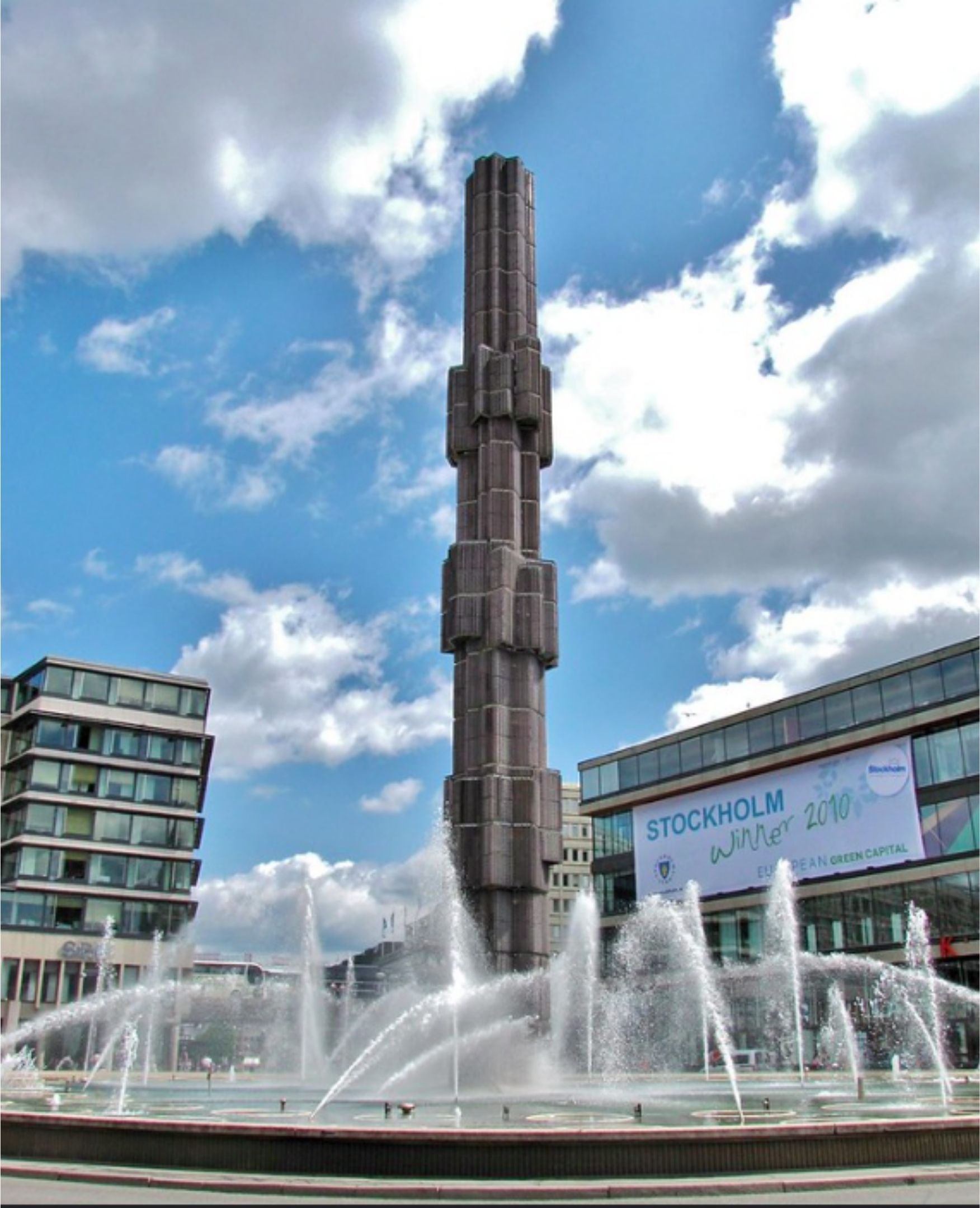
In the bustling heart of Stockholm lies a fountain that has become more than just a water feature—it's the beating pulse of Sweden's capital. The Sergel Fountain, standing proudly in Sergels Torg (Sergels Square), represents one of the most fascinating examples of how water features can transform urban spaces and become the social and cultural epicenter of a modern city.
A Modern Marvel in Stockholm's Heart
The Sergels Torg fountain was completed in 1968, and since 2000, the site has been designated a landmark of national interest for cultural heritage management. What makes this fountain truly unique is its innovative design featuring a superellipse-shaped basin with 64 glass openings that allow visitors to observe water patterns from the underground Sergelarkaden passage. This architectural marvel creates a mesmerizing interplay between the surface plaza and the underground shopping arcade below.
The fountain's centerpiece wasn't added until 1974, when the iconic Crystal Vertical Accent—a towering glass obelisk reaching 37.5 meters high—was installed. This striking addition by artist Edvin Öhrström transformed the fountain from a simple water feature into a landmark that defines Stockholm's skyline and serves as a beacon for the city center.
The Birth of a City Centre
Sergels Torg is a major public square in Stockholm constructed in the 1960s and named after 18th-century sculptor Johan Tobias Sergel, whose workshop was once located north of the square. The square and its fountain emerged from Stockholm's ambitious urban renewal project of the 1950s and 1960s. It was modernized and expanded in the 1950s to deal with the city's growing population.
This transformation wasn't without controversy. The development came at the cost of demolishing much of the historic Klara district, sparking debates about urban planning priorities that continue today. However, the result was undeniably effective in creating a new type of city center—one designed for the modern age.
Despite initial criticism for prioritizing vehicular traffic over pedestrians, Sergels Torg has evolved into something remarkable. It remains the most popular space in Stockholm for meeting friends, for political demonstrations, for a wide range of events. The fountain sits at the center of this activity, serving as both a visual anchor and a natural gathering point.
Historical Significance Beyond Stockholm
The Sergel Fountain represents more than just Stockholm's urban planning—it embodies a significant moment in Scandinavian design philosophy and post-war city development. The fountain emerged during Sweden's era of modernist urban planning, when cities across Europe were grappling with rapid population growth and the need to create functional, beautiful public spaces.
The timing of its completion in 1968 is particularly significant, coinciding with a period of social and cultural transformation across Europe. The fountain became a symbol of Sweden's progressive approach to urban design, emphasizing both functionality and artistic expression. Its designation as a cultural heritage landmark in 2000 acknowledges its importance not just as a fountain, but as a representation of an entire era's vision for urban living.
The Timeless Role of Fountains in City Centers
Water fountains have served as urban focal points for millennia, and the Sergel Fountain continues this ancient tradition in a distinctly modern way. From their historical roots as sources of water and gathering places to their modern roles as interactive art installations and event spaces, fountains continue to draw people together.
These early fountains were marvels of engineering and played a crucial role in ensuring a reliable water supply for cities. They also served as social and cultural hubs, where people gathered to collect water, socialize, and participate in public life. While modern fountains like Sergel's no longer serve the practical purpose of water supply, they fulfill an even more important function in our urbanized world.
Fountains often carry profound civic symbolism, representing the values, history, and identity of a community. They become landmarks that encapsulate the spirit of a city. The Sergel Fountain exemplifies this perfectly—its modernist design and central location make it an unmistakable symbol of Stockholm's character: progressive, innovative, and unafraid to embrace bold architectural choices.
The Psychology of Urban Water Features
What makes fountains so effective as city centers goes beyond their visual appeal. Water designed in public spaces significantly increase the social and aesthetic value of public spaces. The sound of flowing water creates a calming acoustic environment that contrasts with the typical urban noise, while the visual movement of water provides a dynamic focal point that naturally draws the eye and encourages lingering.
The Sergel Fountain's unique design, with its underground viewing opportunities, adds another dimension to this experience. Visitors can engage with the fountain from multiple levels and perspectives, creating a more immersive and memorable interaction with the urban environment.
A Living Legacy
Today, the Sergel Fountain continues to serve its intended purpose as Stockholm's primary gathering place. Whether it's hosting political demonstrations, serving as a meeting point for friends, or simply providing a moment of urban tranquility for passing pedestrians, the fountain remains as relevant and vital as ever.
The fountain's enduring success offers valuable lessons for contemporary urban planners. It demonstrates that effective city centers require more than just functional design—they need elements that capture the imagination, provide sensory experiences, and create emotional connections with the community they serve.
As cities worldwide grapple with creating meaningful public spaces in an increasingly digital age, the Sergel Fountain stands as proof that well-designed water features can transcend their original purpose to become the very heart of urban life. In Stockholm, this fountain isn't just a landmark—it's the place where the city's pulse can be felt most clearly, where past and future converge in the gentle dance of water and light.
The Sergel Fountain reminds us that great cities are defined not just by their buildings or streets, but by the spaces where people naturally gather, connect, and feel part of something larger than themselves. In Stockholm, that space happens to be blessed with the eternal appeal of flowing water and the bold vision of Swedish design.
